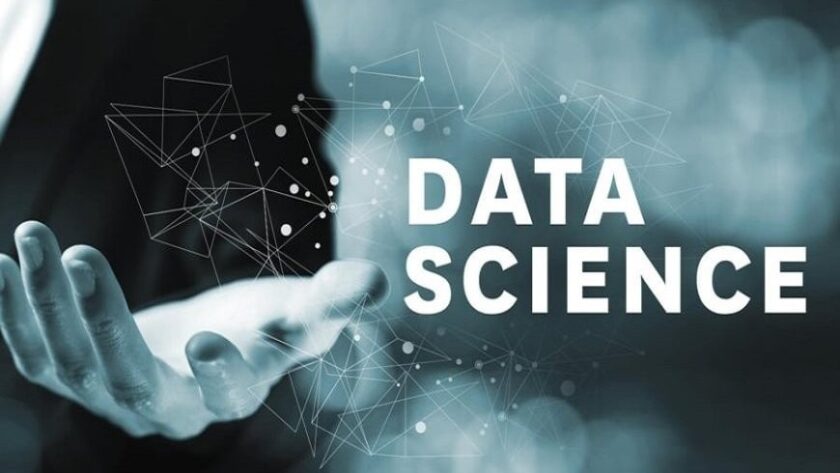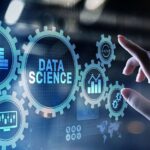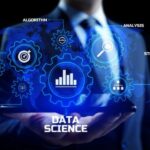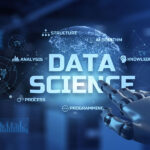Unlocking the Power of Data: A Comprehensive Guide to Data Science and Its Applications
In today’s digital age, data has become one of the most valuable resources, driving decisions, innovations, and transformations across various industries. As organizations generate more data than ever before, the ability to harness its full potential is key to gaining a competitive edge. This is where data science comes into play. Data science is the discipline that uses statistical, mathematical, and computational techniques to extract insights and value from data. In this comprehensive guide, we will explore what data science is, the skills required, the tools and technologies used, and how it applies to various sectors.
1. What is Data Science?
Data science is an interdisciplinary field that combines various techniques from computer science, statistics, mathematics, and domain-specific knowledge to analyze and interpret complex data. The goal of data science is to extract actionable insights from raw data, which can help organizations make informed decisions, improve efficiency, and innovate.
At its core, data science involves the following processes:
- Data Collection: Gathering relevant and reliable data from multiple sources.
- Data Cleaning and Preparation: Processing and organizing the data into a usable format.
- Exploratory Data Analysis (EDA): Analyzing data to find patterns, relationships, and insights.
- Modeling and Machine Learning: Applying statistical models and algorithms to make predictions or classifications.
- Data Visualization: Presenting data in a clear and interpretable way to aid decision-making.
- Interpretation and Communication: Translating technical findings into actionable insights for non-technical stakeholders.
Data scientists use a combination of programming languages, machine learning algorithms, statistical models, and data visualization tools to perform these tasks.
2. The Skills Required for Data Science
To be successful in the field of data science, professionals must possess a diverse set of skills that span multiple domains. Here are some of the key skills required:
A. Programming Languages
- Python: Python is one of the most widely used programming languages in data science due to its simplicity and flexibility. It has a large ecosystem of libraries (such as NumPy, Pandas, and Matplotlib) that make data analysis and manipulation easier.
- R: R is another programming language popular in the data science community, particularly for statistical analysis and data visualization.
- SQL: SQL (Structured Query Language) is essential for working with databases. It allows data scientists to query and manipulate large datasets.
B. Statistics and Mathematics
- Descriptive Statistics: Understanding basic statistical concepts such as mean, median, mode, variance, and standard deviation is essential for summarizing and interpreting data.
- Inferential Statistics: The ability to make predictions or inferences about a population based on sample data.
- Probability: Knowledge of probability theory is crucial for making predictions and understanding the uncertainty in data.
- Linear Algebra and Calculus: These mathematical techniques are used to build and understand machine learning algorithms.
C. Machine Learning and Algorithms
- Supervised Learning: Techniques like regression and classification algorithms are used to make predictions based on labeled data.
- Unsupervised Learning: Algorithms such as clustering and dimensionality reduction help identify patterns and relationships in unlabeled data.
- Deep Learning: A subset of machine learning that uses neural networks to model complex relationships in data. Deep learning is used in applications like image recognition, natural language processing, and autonomous driving.
D. Data Visualization
Data visualization tools like Tableau, Power BI, and libraries such as Matplotlib and Seaborn in Python are essential for creating visual representations of data. Effective visualization helps data scientists communicate complex findings to stakeholders.
E. Domain Knowledge
While technical skills are critical, domain knowledge is also important. Understanding the industry or field you’re working in allows you to interpret data effectively and make recommendations that are both actionable and relevant.
3. Tools and Technologies in Data Science
Data scientists rely on various tools and technologies to analyze data, build models, and communicate insights. Some of the most popular tools include:
A. Programming Libraries and Frameworks
- Pandas: A Python library for data manipulation and analysis. It allows data scientists to work with structured data in the form of DataFrames.
- Scikit-learn: A machine learning library in Python that provides simple and efficient tools for data analysis and modeling.
- TensorFlow and Keras: Deep learning frameworks developed by Google and open-source communities. These tools are used for building complex neural network models.
- PyTorch: Another deep learning framework known for its flexibility and ease of use.
- Spark: Apache Spark is a powerful open-source framework for distributed data processing, particularly useful for big data analytics.
B. Data Visualization Tools
- Matplotlib and Seaborn: Popular Python libraries for creating static, animated, and interactive visualizations.
- Tableau: A widely used business intelligence tool that allows users to create interactive visualizations and dashboards.
- Power BI: A Microsoft tool used for visualizing data and creating reports for decision-makers.
C. Cloud Computing and Big Data
- Hadoop: An open-source framework that allows for the distributed storage and processing of large datasets.
- Amazon Web Services (AWS), Microsoft Azure, and Google Cloud: Cloud platforms provide scalable infrastructure for storing and analyzing data.
D. Data Storage and Databases
- SQL Databases: Databases like MySQL, PostgreSQL, and Microsoft SQL Server are used to store structured data.
- NoSQL Databases: For unstructured or semi-structured data, databases like MongoDB and Cassandra are used.
- Data Warehouses: Platforms like Amazon Redshift and Google BigQuery provide storage and querying capabilities for large volumes of data.
4. Applications of Data Science
Data science has a wide range of applications across industries, transforming how businesses operate and make decisions. Some of the key applications include:
A. Healthcare
- Predictive Analytics: Data science is used to predict patient outcomes, diagnose diseases, and optimize treatment plans. Machine learning models can identify patterns in medical data, helping doctors make better decisions.
- Medical Imaging: Deep learning algorithms are used to analyze medical images such as X-rays, MRIs, and CT scans, helping doctors detect conditions like cancer early.
B. Finance
- Fraud Detection: Financial institutions use data science to detect fraudulent transactions by analyzing patterns in transaction data.
- Algorithmic Trading: Data science is used to build trading algorithms that can analyze market data and make real-time decisions to buy or sell assets.
- Risk Management: Data science helps assess risk in investment portfolios and loans, allowing financial institutions to make more informed decisions.
C. Retail and E-commerce
- Recommendation Systems: Online retailers like Amazon and Netflix use data science to personalize product recommendations for customers based on past behavior and preferences.
- Customer Segmentation: Data science helps businesses segment their customers based on demographics, purchasing behavior, and preferences, enabling more targeted marketing.
D. Marketing and Advertising
- Targeted Advertising: Marketers use data science to analyze consumer behavior and create personalized advertisements that are more likely to result in sales.
- Customer Lifetime Value (CLV): Data science is used to predict the long-term value of customers, helping companies prioritize high-value customers and improve retention.
E. Transportation and Logistics
- Route Optimization: Data science is used by logistics companies to optimize delivery routes, reducing fuel costs and improving delivery times.
- Autonomous Vehicles: Machine learning and deep learning are critical in the development of self-driving cars by enabling vehicles to process sensor data and make real-time driving decisions.
F. Sports
- Performance Analysis: Teams and coaches use data science to analyze players’ performance, optimize strategies, and improve training methods.
- Injury Prevention: Data science helps predict and prevent injuries by analyzing patterns in player data, such as movement, load, and recovery time.
5. Challenges in Data Science
While data science has proven to be a powerful tool, it also comes with its own set of challenges. These include:
- Data Quality: The effectiveness of a model depends heavily on the quality of the data. Inaccurate or incomplete data can lead to unreliable results.
- Data Privacy and Security: With the increasing amount of personal data being collected, ensuring that data is protected and privacy is maintained is critical.
- Scalability: As the volume of data grows, it becomes challenging to scale models and systems to handle large datasets efficiently.
- Interpretability: Many machine learning models, particularly deep learning models, are considered “black boxes,” meaning that their decision-making processes are not always transparent. This lack of interpretability can be a barrier in industries where accountability is important.
Conclusion
Data science is at the forefront of technological innovation, transforming how we understand and interact with the world. From healthcare to finance, retail to marketing, the applications of data science are vast and growing. By harnessing the power of data, businesses can make more informed decisions, improve efficiency, and offer personalized experiences to their customers. The future of data science holds even more exciting possibilities, particularly as advancements in AI and machine learning continue to evolve. For those looking to enter this field, acquiring the right technical skills and domain knowledge will be key to unlocking the full potential of data science.
Key Takeaways:
- Data science combines statistics, mathematics, computer science, and domain-specific knowledge to analyze and interpret data.
- Key skills for data scientists include programming, statistical analysis, machine learning, and data visualization.
- Tools like Python, R, TensorFlow, and Tableau are essential in the data science workflow.
- Data science has wide-ranging applications, including healthcare, finance, marketing, and transportation.
- Despite its potential, data science faces challenges such as data quality, privacy concerns, and model interpretability.




